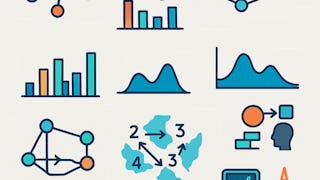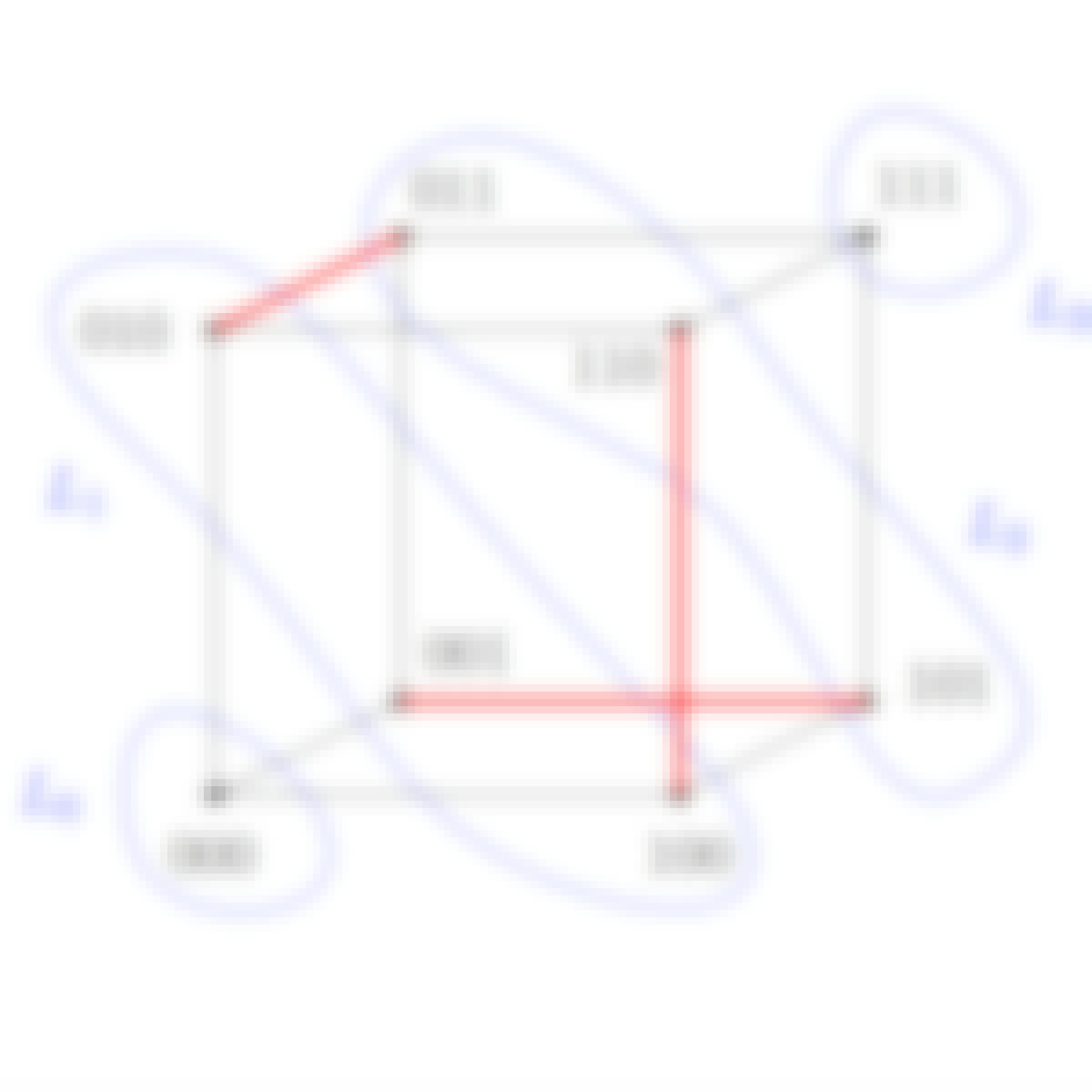- Browse
- Topology
Topology Courses
Topology courses can help you learn about continuity, compactness, and connectedness, along with concepts like homeomorphisms and topological spaces. You can build skills in visualizing complex structures, analyzing spatial relationships, and applying theoretical principles to practical problems.
Popular Topology Courses and Certifications
 Status: PreviewPreview
Status: PreviewPreviewSkills you'll gain: Multi-Cloud, Data Architecture, Dataflow, Data Management, Regulatory Compliance, Information Architecture, Cloud Management, Data Infrastructure, Data Strategy, AI Product Strategy, Data Science, Data Security, Strategic Planning
4.6·Rating, 4.6 out of 5 stars35 reviewsIntermediate · Course · 1 - 4 Weeks
 Status: Free TrialFree TrialU
Status: Free TrialFree TrialUUniversity of California San Diego
Skills you'll gain: Graph Theory, Logical Reasoning, Cryptographic Protocols, Combinatorics, Computational Logic, Deductive Reasoning, Cryptography, Probability, Key Management, Computational Thinking, Encryption, Probability Distribution, Network Analysis, Public Key Cryptography Standards (PKCS), Theoretical Computer Science, Bayesian Statistics, Python Programming, Data Structures, Algorithms, Arithmetic
4.5·Rating, 4.5 out of 5 stars3.7K reviewsBeginner · Specialization · 3 - 6 Months
 Status: NewNewB
Status: NewNewBBirla Institute of Technology & Science, Pilani
Skills you'll gain: Graph Theory, Network Analysis, Social Network Analysis, Combinatorics, Network Model, Mathematical Modeling, Data Structures, Transportation Operations, Image Analysis, Algorithms, Theoretical Computer Science, Artificial Intelligence and Machine Learning (AI/ML), Problem Solving
Intermediate · Course · 1 - 3 Months
 Status: Free TrialFree Trial
Status: Free TrialFree TrialSkills you'll gain: Computer Networking, Network Troubleshooting, TCP/IP, Network Architecture, Network Protocols, OSI Models, Network Routing, Network Infrastructure, Dynamic Host Configuration Protocol (DHCP), Virtual Private Networks (VPN), Network Security, Wireless Networks, Network Model, Data Integrity
4.7·Rating, 4.7 out of 5 stars52K reviewsBeginner · Course · 1 - 3 Months
 Status: NewNewStatus: Free TrialFree TrialG
Status: NewNewStatus: Free TrialFree TrialGGoogle
Skills you'll gain: Network Infrastructure
4.6·Rating, 4.6 out of 5 stars16 reviewsBeginner · Course · 1 - 4 Weeks
 Y
YYale University
Skills you'll gain: Anatomy, Neurology, Human Musculoskeletal System, Respiration, Physiology, Radiology, Surgery
4.8·Rating, 4.8 out of 5 stars42 reviewsBeginner · Course · 1 - 3 Months
What brings you to Coursera today?
 Status: Free TrialFree TrialJ
Status: Free TrialFree TrialJJohns Hopkins University
Skills you'll gain: Social Network Analysis, Network Analysis, Graph Theory, Social Sciences, Statistical Analysis, R Programming, Sociology, Statistical Modeling, Statistical Hypothesis Testing
4.1·Rating, 4.1 out of 5 stars10 reviewsIntermediate · Course · 1 - 4 Weeks
 Status: FreeFreeP
Status: FreeFreePPrinceton University
Skills you'll gain: Combinatorics, Mathematical Theory & Analysis, Advanced Mathematics, Theoretical Computer Science, Calculus, Probability, Applied Mathematics
4.7·Rating, 4.7 out of 5 stars71 reviewsIntermediate · Course · 1 - 3 Months
 Status: PreviewPreviewS
Status: PreviewPreviewSShanghai Jiao Tong University
Skills you'll gain: Combinatorics, Graph Theory, Theoretical Computer Science, Mathematical Theory & Analysis, Advanced Mathematics, Network Analysis, Computational Thinking, Algorithms, Data Structures, Computer Science
3.3·Rating, 3.3 out of 5 stars201 reviewsIntermediate · Course · 1 - 3 Months
 Status: Free TrialFree TrialU
Status: Free TrialFree TrialUUniversity of Michigan
Skills you'll gain: Human Musculoskeletal System, Anatomy, Endocrinology, Pulmonology, Cardiology, Respiration, Gynecology, Hematology, Obstetrics And Gynecology, Orthopedics, Neurology, Urology, Nephrology, Kinesiology, Physiology, Medical Imaging, Sports Medicine, Biology, Medical Terminology, Cell Biology
4.8·Rating, 4.8 out of 5 stars4K reviewsBeginner · Specialization · 3 - 6 Months
 Status: NewNewStatus: Free TrialFree Trial
Status: NewNewStatus: Free TrialFree TrialSkills you'll gain: 3D Modeling, 3D Assets, Computer Graphics, Virtual Environment, Virtual Reality, Visualization (Computer Graphics), File Management, Architectural Design, Performance Tuning, Graphical Tools, Structural Engineering, Image Quality
Intermediate · Specialization · 3 - 6 Months
 Status: NewNewStatus: Free TrialFree Trial
Status: NewNewStatus: Free TrialFree TrialSkills you'll gain: 3D Modeling, Post-Production, Game Design, Video Game Development, Video Production, Augmented and Virtual Reality (AR/VR), File Management, Functional Design, Design, Simulations, Aesthetics, Design Elements And Principles, Color Theory
Intermediate · Specialization · 3 - 6 Months
Searches related to topology
In summary, here are 10 of our most popular topology courses
- IBM Data Topology: IBM
- Introduction to Discrete Mathematics for Computer Science: University of California San Diego
- Graphs and Networks: Birla Institute of Technology & Science, Pilani
- The Bits and Bytes of Computer Networking: Google
- Network Architecture: Google
- Anatomy of the Head and Spine : Yale University
- Social Network Analysis: Johns Hopkins University
- Analytic Combinatorics: Princeton University
- Discrete Mathematics: Shanghai Jiao Tong University
- Anatomy: University of Michigan
Frequently Asked Questions about Topology
Topology refers to network topology, which describes the actual logical and physical layout of the network, from the way that the network nodes are in place, to how they connect with the other nodes. Topology is the organized mapping and communications structure for a network of computers that exchange data among each other.
There are two types of network topologies. In these two logical and physical topologies in computers, the logical topology concentrates on data transfer patterns between nodes in a network, while the physical topology focuses on how the nodes and connected devices are actually laid out.
Learn about topology because it's an important characteristic of computer networks. It's in a visual format, which makes it easier to learn. Topology also has aspects that can be applied to statistics, data science, chemistry, physics, and other sciences.
It has real-world applications too. When you learn about topology, the theory involved can help you set up a small home or business network on your own. That skill is becoming essential, as our world becomes increasingly more connected.
Some of the careers that use topology knowledge include data science managers, mathematical science teachers, mathematicians, natural sciences analysts, and other science and technology professions. You may even see elements of topology in careers in virtual reality, visual modeling, and network capabilities. There are jobs in the visual arts and film industries that encompass network understanding that topology can give you.
When you study topology in online courses, you'll expose yourself to understanding cloud networks, networked nodes, information architecture, visual network modeling, and other areas of interest. These online courses are taught by experts in their field, with years of experience in the history of how networks have evolved over time. As you grow your career using concepts of topology, you'll realize the importance of this knowledge in statistical approaches, network formations, and machine learning.
Online Topology courses offer a convenient and flexible way to enhance your knowledge or learn new Topology skills. Choose from a wide range of Topology courses offered by top universities and industry leaders tailored to various skill levels.
When looking to enhance your workforce's skills in Topology, it's crucial to select a course that aligns with their current abilities and learning objectives. Our Skills Dashboard is an invaluable tool for identifying skill gaps and choosing the most appropriate course for effective upskilling. For a comprehensive understanding of how our courses can benefit your employees, explore the enterprise solutions we offer. Discover more about our tailored programs at Coursera for Business here.










